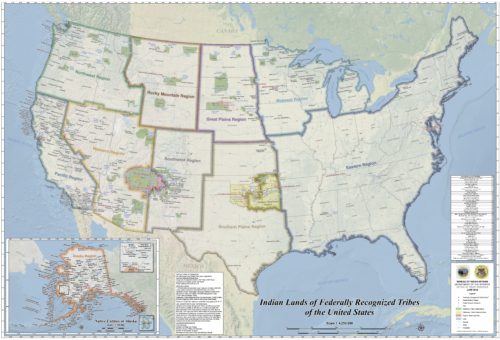
Indian Lands of Federally Recognized Tribes of the United States. Photo courtesy of the Bureau of Indian Affairs.
The 567 federally recognized Native American Tribes and Alaska Natives in the United States have many different languages and customs, but one thing they all share is a deep reverence for the natural world. It makes sense, then, that many tribes are choosing to go solar to help reduce their carbon footprints, save money on electric bills and create revenue on reservations.
According to the Bureau of Indian Affairs, of the 326 American Indian reservations, “more than 150 have the resource capacity needed to sustain a 1- to 25-MW renewable and/or natural gas power generation facility.” The Department of Energy and Mineral Development has a grant program for tribes to access government funds for solar development, and its staff can help tribes through the process of going solar.
GRID Alternatives also help identify funding sources for Native American solar. In addition to financing projects, the organization launched a tribal program in 2014, where it works with tribes to install solar and provide training to students at tribal colleges throughout the country.
Here are eight tribes that have added solar to their portfolios.
Navajo
Window Rock, Arizona
The Navajo Tribe has operated the coal-fired Navajo Generating Station since the 1970s, but the plant will soon close in 2019 due to competition from falling natural gas costs.
To help balance the socioeconomic impacts of the closure, Navajo President Russell Begaye is pivoting to renewables. The Navajo Tribal Utility Authority now has a 27.5-MW solar farm on 300 acres in a Navajo community south of Monument Valley, Arizona, according to the Associated Press. AP reports the solar farm “delivers energy across the reservation and into Arizona, California, New Mexico and Utah.” First Solar operates the project in Tempe, Arizona, but according to AP, there are plans to bring the controls in-house.
Sokaogon Chippewa
Crandon, Wisconsin
SunVest Solar contracted Current Electric to build over 600 kW of solar on about 50 homes and 19 commercial sites for the Sokaogon Chippewa Community in Wisconsin. SunVest funded the project through a $1.1 million grant from the U.S. Energy Department and the Department of Housing and Urban Development. Part of the mission included hiring members of the tribe to help work on the installation.
Hoopa Valley
Hoopa, California
The Hoopa Valley Tribe added a solar carport along with storage to virtually eliminate the annual electricity bill for the tribe’s community center. The center includes indoor basketball courts and an outdoor swimming pool. JLM Energy provided the solar+storage solution and also financed the project.
Chemehuevi
Havasu Lake, California
EnSync Energy added a DER system to the Chemehuevi Tribe’s community center that includes a 90-kW solar array and energy storage totaling 125 kWh. The University of California Riverside’s Southern California Research Initiative for Solar Energy (SC-RISE) obtained state funding to build the system for the tribe that demonstrates DERs and grid load management, while addressing energy resiliency and reliability issues at the community center.
Southern Ute
Ignacio, Colorado
The Southern Ute Tribe received a $1.5 million grant from the Department of Energy and funded $1.5 million itself to build a 1.3-MW ground-mount solar array on 10 acres of the tribe’s land. The tribe contracted Namaste Solar to design and build the project that will help to offset the energy usage of 10 tribal buildings.
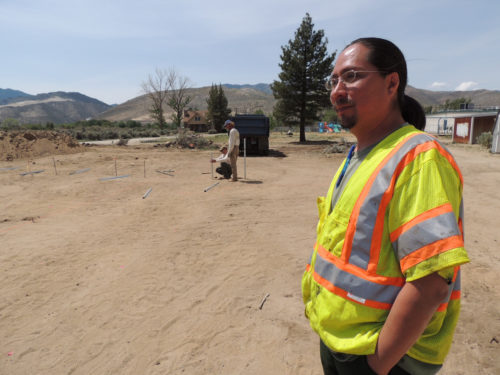
The Washoe Tribe’s cultural monitor Otis Bryan watches over construction of a 35-kW solar array at the Stewart Family Wellness Center in May. Photo courtesy of the Washoe Tribe.
Washoe
Gardnerville, Nevada
The Washoe Tribe contracted nonprofit Black Rock Solar to build seven ground-mount solar arrays at community centers on the tribe’s land. The tribe financed the project that will offset energy costs for about 50 homes with help from a $470,000 grant from the Department of Energy and NVEnergy rebates.
Leech Lake Band of Ojibwe
Cass Lake, Minnesota
The Rural Renewable Energy Alliance (RREAL) received a grant from the McKnight Foundation and the Legislative-Citizen Commission on Minnesota Resources to build a 200-kW community solar array for the Leech Lake Band of Ojibwe Tribe. The solar will help offset energy costs for about 100 families. The Initiative Foundation also helped RREAL fund three tribal college students’ solar installation training and certification. The students then put their training into action and helped with the installation.
Read more about the project, which won the 2017 Brian D. Robertson Memorial Fund Award, here.
Moapa Band of Paiutes
Moapa, Nevada
The Moapa Southern Paiute Solar Project was the first utility-scale solar project on tribal land. First Solar constructed and operates the 250-MW plant that’s capable of generating enough energy to power about 111,000 homes. The tribe has a 25-year PPA with the Los Angeles Department of Water and Power to bring clean energy to Los Angeles residents. The tribe will benefit from lease revenues over the lifetime of the project and about 115 construction jobs for tribal members and other Native Americans.

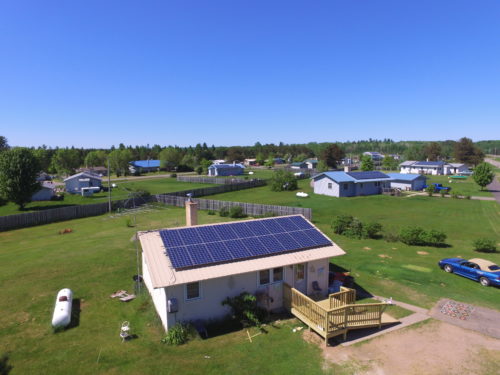
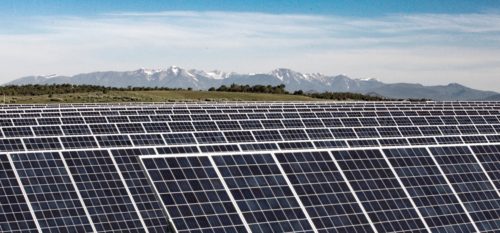
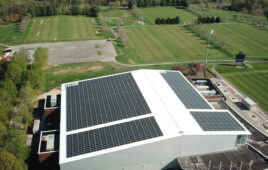

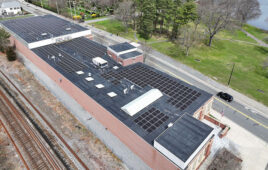
Don’t forget to add South Dakota tribe that is making an 80 acre solar farm by Pine Ridge, AlbumsKILI Radio 20 kW Solar Installation
5 photos · Oct 13, 2018
“It can be hard to make positive change happen in the world. On the Pine Ridge Reservation in South Dakota, it is almost impossible. But we are doing it because of the help and caring of friends like Aaron and Jason with InOurHands. For more than two decades, I have struggled to educate Native American youth – both women and men and show them a new way to honor the old way. The Lakota are sun dancers and we have a song and a ceremony for every element and aspect of nature. So, it’s easy to help our young people to identify with renewable energy and sustainable building and living. With InOurHands’ assistance, we have the ability to broaden our knowledge base and move forward to bring energy independence, renewable energy and new housing options to our tribes and communities.” -Henry Red Cloud
Interesting. Am living on Colville reservation in north central Washington. Would like to start buying a home. And have solar for saving money. Is it feasible? Electric is fairly cheap.
Without a doubt, Edward. I seem to remember that the high plains of Washington State have a higher level of wind coming out of the north and east as well. Mixing solar and wind might actually take care of you and possibly most of the people that share your part of the land in North Central Washington State.
I am very interested in doing what I can to help the American Indians facing yet another cold winter. I have heard that there is a company which now manufactures glass windows that create solar heat. i’ve also heard of a company that is manufacturing shingles which can be nailed to the tops and sides of houses….shingles which also create solar energy.
I thought that these products could be a great help to Native Americans struggling in the winter’s cold.
Thank you,
Dr Elizabeth Barber
In reference to the Seneca Nation, go to sni.org, click on Seneca Energy LLC in the scrolling banner or use senecaenergy.com to visit our web page and view our program.
The Grand Traverse Band of Ottawa and Chippewa indians, in Suttons Bay, MI, has added a 60 kw solar PV array to power their Medical care facility. ( Installed by CBS Solar)
Also the Little Traverse Band band of Odawa Indians in the Petoskey, MI has installed various solar arrays. I am sure there are more. Thanks for the article.
Like the opportunity it offers for the students. I am entrepreneur developing modular designed Tipi homes on the Pine Ridge Indian Reservation and surrounding areas. An application of this to our units would further connect us to the vision of cultural sustainibility of today. At this time I am currently working with senior students attending the South Dakota School of Mines and Technology on engineering a strong viable home.
Chris Cuny
Please contact the OLCERI project at Slim Butte, West of Pine Ridge. Bryan Deans is the principal, he has a Facebook page.
Oglala Lakota project outside of Kyle, SD is using solar. Thunder Valley CD. Check them out.
https://energy.gov/indianenergy/projects
Please check out what the Seneca Nation of Indians is doing…they have installed a 1.5MW wind turbine and are putting the final touches on a 2+MW solar array.
Keweenaw Bay Indian Community (KBIC) with HQ in Baraga, Michigan, has installed three grid-tied arrays totaling about 175 kW DC. Focus has been power for their health clinics and a food warehouse.
Contact would be Jason Ayres
Jayres@kbic-nsn.gov
Submiited by D. Friedrichs
http://www.HomelandSolar.com